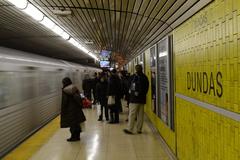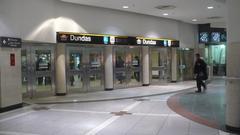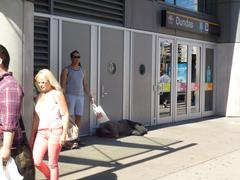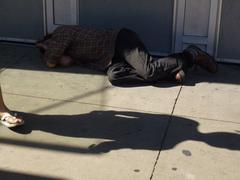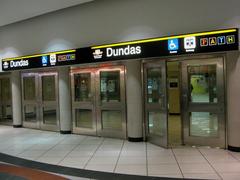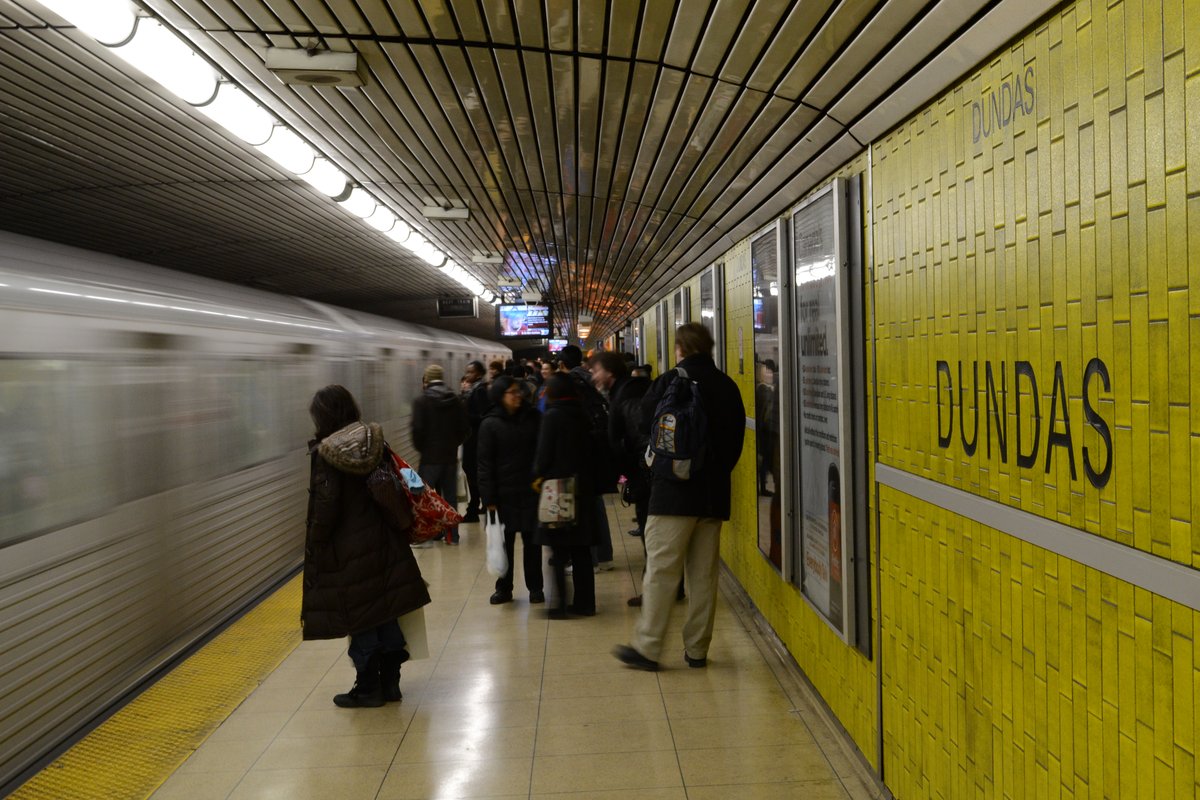
Dundas Toronto Historical Site: Visiting Hours, Tickets, and Tourist Guide
Date: 15/06/2025
Introduction
Dundas Street is one of Toronto’s most historic and culturally vibrant corridors, connecting the city’s past and present through a dynamic blend of heritage landmarks, diverse neighborhoods, and contemporary urban energy. Conceived in the late 18th century as a military and commercial route, Dundas Street today serves as a living testament to Toronto’s multicultural identity, architectural evolution, and ongoing social dialogue.
This comprehensive guide provides everything you need to know for exploring Dundas Street—its history, key attractions, visitor information, accessibility tips, and ways to make the most of your visit. Whether you’re seeking art, food, shopping, or a deeper understanding of Toronto’s urban story, Dundas Street offers a rich and accessible experience for all.
Table of Contents
- Historical Overview: Early Origins and Urban Evolution
- Dundas Street Today: Culture, Community, and Controversy
- Visiting Dundas Street: Practical Information
- Top Attractions and Landmarks
- Events, Festivals, and Special Experiences
- Architectural Highlights
- Dining, Nightlife, and Shopping
- Visitor Tips and Accessibility
- Frequently Asked Questions (FAQs)
- Sources and Further Reading
- Conclusion
Historical Overview: Early Origins and Urban Evolution
Dundas Street traces its origins to the late 1790s, when John Graves Simcoe, the first Lieutenant Governor of Upper Canada, envisioned a strategic route linking York (now Toronto) to western settlements like London, Ontario (Toronto Guardian). The street was named for Simcoe’s friend, Henry Dundas, 1st Viscount Melville, a powerful British politician (Wikipedia).
The original route was shaped by natural landscapes and pre-existing Indigenous trails, resulting in the street’s distinctive doglegged and irregular path (BlogTO). Over the decades, the city’s effort to connect multiple disconnected roads led to further realignment and expansion, culminating in the continuous east-west arterial seen today (Toronto Guardian). Historic inns and taverns like Lambton House and Montgomery’s Inn served as crucial rest stops for travelers and settlers, marking Dundas Street’s role in regional development (Sean Marshall).
Dundas Street Today: Culture, Community, and Controversy
Dundas Street is both a physical and cultural artery, weaving through neighborhoods such as Chinatown, Little Portugal, Ossington Strip, and Kensington Market. It is home to significant institutions like the Art Gallery of Ontario (AGO) and lively public spaces such as Yonge-Dundas Square (recently renamed Sankofa Square) (Timeout Toronto).
The street has also become a focal point for community discussions about reconciliation and historical justice, as Henry Dundas’s legacy has come under scrutiny for his role in delaying the abolition of the British Empire’s slave trade (CBC). These debates have led to educational initiatives, renaming projects, and broader conversations about Toronto’s identity and approach to public commemoration (Toronto.ca).
Dundas Street is, above all, a microcosm of Toronto’s multicultural spirit, bustling with year-round festivals, food markets, shops, and artistic expression (History of Toronto).
Visiting Dundas Street: Practical Information
Getting There
- Public Transit: Dundas Street is easily accessible by TTC, including the Line 1 Dundas subway station at Yonge-Dundas Square/Sankofa Square, and the 505 Dundas streetcar connecting east and west Toronto (TTC Dundas Station). Nearby Union Station links to intercity rail and the airport train (Toronto Tourist Information Centre).
- Walking & Cycling: Wide sidewalks and some bike lanes make Dundas Street highly walkable and bike-friendly, especially between Spadina Avenue and Yonge Street (Toronto Info Center).
- Parking: On-street pay parking is available at designated hours, with several public lots nearby. Check city signage and Toronto City Council Report for details.
Hours and Fees
- Dundas Street: As a public thoroughfare, it is open 24/7 and free to explore.
- Attractions: Individual sites like the Art Gallery of Ontario (AGO), Eaton Centre, and theatres have their own hours and may require tickets (see below).
Accessibility
- Sidewalks and public spaces along Dundas Street are generally wheelchair and stroller accessible. Major attractions and transit stations are equipped with elevators and ramps (TTC Accessibility).
Top Attractions and Landmarks
Sankofa Square (formerly Yonge-Dundas Square)
- Hours: Open 24/7; events usually between 10 AM–11 PM.
- Events: Free concerts, markets, and festivals. Some events require advance tickets (Yonge-Dundas Square).
- Tips: Visit at night for dazzling lights and cityscape photography.
Art Gallery of Ontario (AGO)
- Location: 317 Dundas St West (AGO Tickets)
- Hours: Tuesday–Sunday, 10:30 AM–5 PM (Wednesdays until 9 PM)
- Admission: Adults $25, Seniors/Students $20, Children under 12 free. Free on Wednesday evenings.
- Accessibility: Fully wheelchair accessible; guided tours and audio guides available.
CF Toronto Eaton Centre
- Hours: Monday–Saturday 10 AM–9 PM, Sunday 11 AM–7 PM
- Features: 250+ shops and restaurants, iconic Canada geese sculpture, direct access to PATH and subway.
- Admission: Free entry; store hours may vary.
Kensington Market & Chinatown
- Hours: Shops generally 10 AM–7 PM; restaurants may stay open later.
- Highlights: Vintage stores, murals, global cuisine, Asian markets. No admission fee.
- Events: Pedestrian Sundays (May–October), street festivals (Toronto Chinatown BIA).
Trinity Bellwoods Park
- Hours: Sunrise to sunset.
- Features: Picnic spots, farmers’ markets, craft fairs; fully accessible.
Little Portugal & Ossington Strip
- Hours: Most venues operate late afternoon to midnight or later.
- Highlights: Portuguese bakeries, trendy bars, live music.
Distillery District
- Hours: Typically 10 AM–7 PM daily.
- Features: Victorian industrial architecture, galleries, shops, seasonal events (Distillery District official site).
- Note: Short transit ride from Dundas Street.
Events, Festivals, and Special Experiences
- Do West Fest: Annual celebration on Dundas Street West with music, food, and art (Curiocity).
- Kensington Market Pedestrian Sundays: Last Sunday of the month, May–October.
- Dundas Square Market: Seasonal weekend market, May–October.
- Cultural Festivals: Lunar New Year in Chinatown, multicultural events at Sankofa Square, and more.
Architectural Highlights
Dundas Street showcases an eclectic mix—from Victorian storefronts to modernist landmarks. Notable sites include:
- AGO’s Frank Gehry Expansion: Striking glass and wood design.
- Historic Massey Hall: Nearby concert venue.
- Ryerson University Buildings: Modern urban campus structures.
- Heritage Storefronts: Particularly in Little Portugal and Kensington Market.
Walking tours focusing on architectural history are available through local organizations (Toronto Historical Society).
Dining, Nightlife, and Shopping
- Dining: Enjoy international cuisine—dim sum in Chinatown, Portuguese pastries in Little Portugal, and gourmet fare near the AGO (History of Toronto).
- Nightlife: Bars, clubs, and live music venues abound, especially along Ossington Strip.
- Shopping: Beyond the Eaton Centre, explore indie boutiques, vintage shops, and crafts markets in Kensington Market and at seasonal events.
Visitor Tips and Accessibility
- Use public transit for the easiest access to Dundas Street’s many attractions.
- Visit during late spring to early fall for festivals and outdoor markets.
- Free public Wi-Fi is available at Sankofa Square, Eaton Centre, and many cafes.
- Most attractions and transit options are wheelchair and stroller accessible.
- For families, Dundas Street offers stroller-friendly sidewalks and kid-oriented venues.
- Tourist information is available at Union Station (Toronto Tourist Information Centre).
- Emergency: Dial 911 for police, fire, or ambulance assistance.
Frequently Asked Questions (FAQs)
Q: Are there visiting hours or tickets for Dundas Street?
A: No, Dundas Street is a public street open 24/7 and free to explore. Individual attractions may have their own hours and ticket policies.
Q: How do I get to Dundas Street?
A: By TTC subway (Dundas Station, Line 1), streetcar (505 Dundas), or on foot. Parking is available but limited.
Q: What are the best times to visit?
A: Late spring through early fall offers the most events and pleasant weather; winter features festive lights and indoor exhibits.
Q: Are attractions along Dundas Street accessible?
A: Yes, major sites like the AGO and Eaton Centre are wheelchair accessible. TTC transit is equipped for mobility devices.
Q: Are guided tours available?
A: Yes, local heritage and tourism organizations offer walking tours focused on history, architecture, and culture.
Q: Is Dundas Street safe?
A: The area is generally safe, but standard urban precautions should be observed, especially at night and during crowded events.
Sources and Further Reading
- Toronto Guardian – Old Photographs of Dundas Street
- Sean Marshall – Dundas Street History
- BlogTO – A Brief History of Dundas Street
- CBC News – Renaming Dundas Street
- History of Toronto – Cultural Diversity
- Timeout Toronto – Best Attractions
- Miss Tourist – Where to Stay in Toronto
- Toronto2Anywhere – Things to Do for First-Time Visitors
- Nina Out and About – Things to Do in Downtown Toronto
- Trending Travel – Toronto Public Transportation
- Toronto City Council – Parking & Accessibility Report
- Toronto Chinatown BIA
- Distillery District Official Site
- City of Toronto – Tourist Information Centres
- Toronto Info Center
- Curiocity – Do West Fest
- See Toronto Now – Audiala App
- Wikipedia – Dundas Street
Conclusion
Dundas Street is much more than an urban thoroughfare; it is a vibrant living museum of Toronto’s history, culture, and evolving identity. As you walk its length, you’ll encounter stories of settlement, transformation, artistic innovation, and social dialogue. The street’s rich blend of attractions, events, dining, and shopping ensures an unforgettable visit for every traveler.
For a deeper and guided experience, download the Audiala app for audio tours and real-time event information. Stay connected with local resources and social media to make the most of your Dundas Street adventure.
